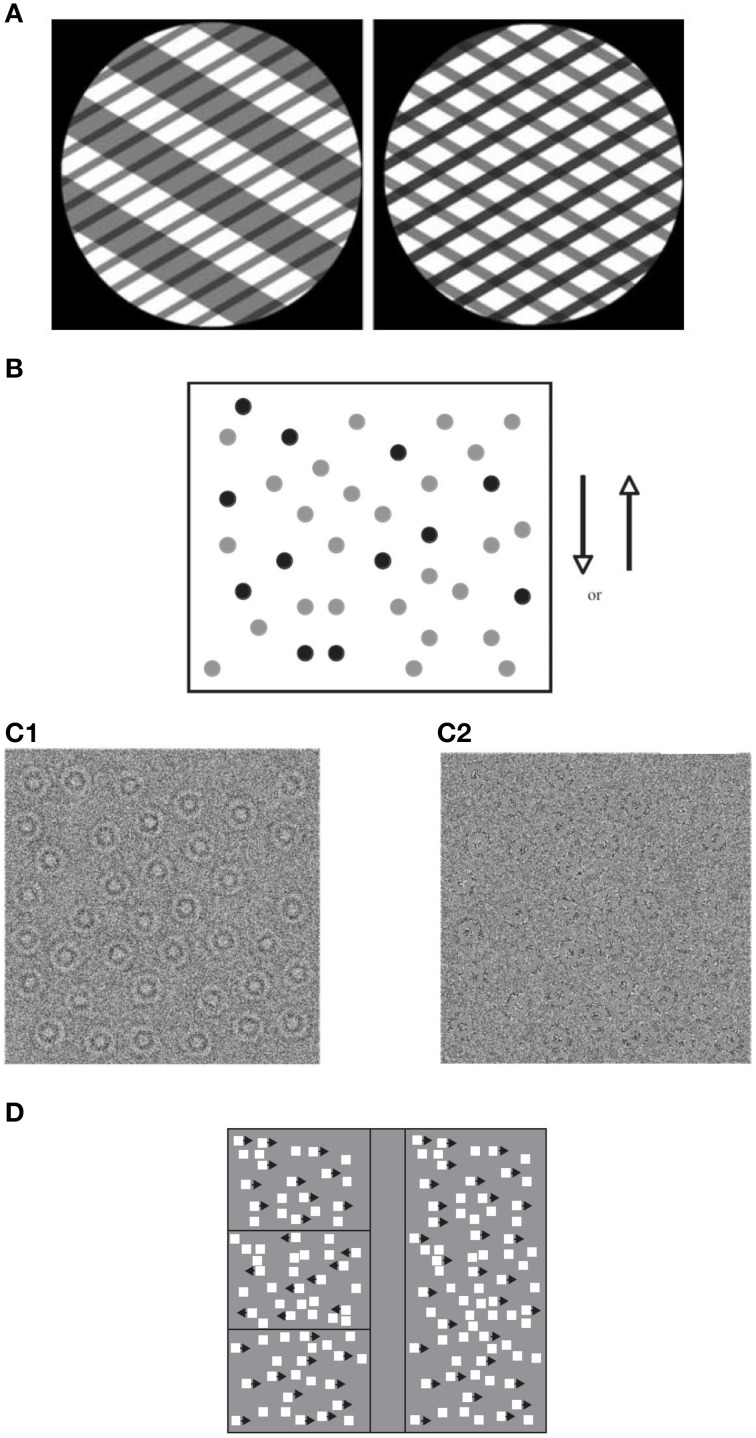Figure 1.
Global motion tasks. (A) Static illustration of plaid patterns composed of two superimposed square-wave grating with different orientations (shown through a circular aperture). Subject's task is to report the integrated direction of motion (adapted from Vandenbroucke et al., 2008); (B) Static illustration of random dot kinematogram (RDK) with 30% coherence. The illustration shows signal dots (those moving up or down) in black, and noise dots (those moving in random directions) in gray. All dots appear in black in the actual displays (adapted from Hadad et al., 2011); (C) Static illustration of random Gabor kinematogram (RGK) with first—(C1) and second—(C2) order motion (adapted from Ellemberg et al., 2010). (D) Another version of an RDK display for measuring the perception of global motion. Subject's task is to locate one of three target strips (presented on the left side of the figure) in which the signal moves in an opposite phase to those in the surrounding region (adapted from Spencer et al., 2000).

